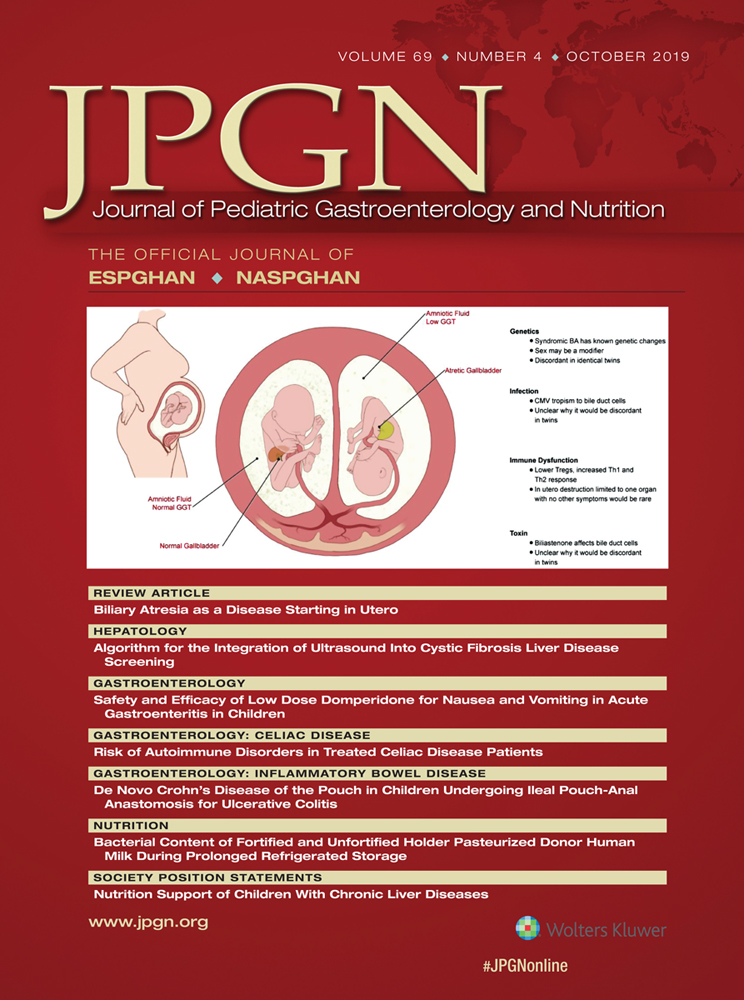Should We Assess Vitamin D Status in Pediatric Patients With Celiac Disease?
Supplemental digital content is available for this article. Direct URL citations appear in the printed text, and links to the digital files are provided in the HTML text of this article on the journal's Web site (www.jpgn.org).
The authors report no conflicts of interest.
ABSTRACT
Objectives:
Screening for vitamin D status in celiac disease (CD) has been recommended but the literature provides varying support. We sought to assess the vitamin D status in newly diagnosed children with CD and in a non-CD control population and relate them to vitamin D intake.
Methods:
In a cross-sectional study, serum 25-hydroxyvitamin D (25-OHD) levels were drawn in children with newly diagnosed CD and compared with pediatric outpatients with functional abdominal complaints. Anthropometric data as well as vitamin D intake based on milk and multivitamin ingestion were collected.
Results:
Thirty-eight newly diagnosed CD patients (10.4 ± 3.0 years old; 50% girls) and 82 controls (11.2 ± 4.2 years old; 58.5% girls) were studied. Both groups were similar except for average daily D intake and BMI. There was no statistical difference in mean 25-OHD levels between CD (26.4 ± 8.0 ng/mL) and controls (23.5 ± 8.2 ng/mL) [P ≤ 0.07]. Both groups had high percentages of suboptimal D status (65.8% CD and 79.3% controls). 25-OHD levels significantly correlated with age (r = −0.262; P < 0.0038) and estimated vitamin D intake (r = 0.361; P < 0.0001).
Conclusions:
No significant difference in 25-OHD levels was noted between newly diagnosed CD and controls, but inadequate 25-OHD levels were common in both. 25-OHD levels were highly associated with vitamin D intake demonstrating similar vitamin D absorption between patients and controls. As CD is associated with bone disease and D status is frequently low, efforts at optimizing D, such as screening levels at diagnosis need to be conducted.




